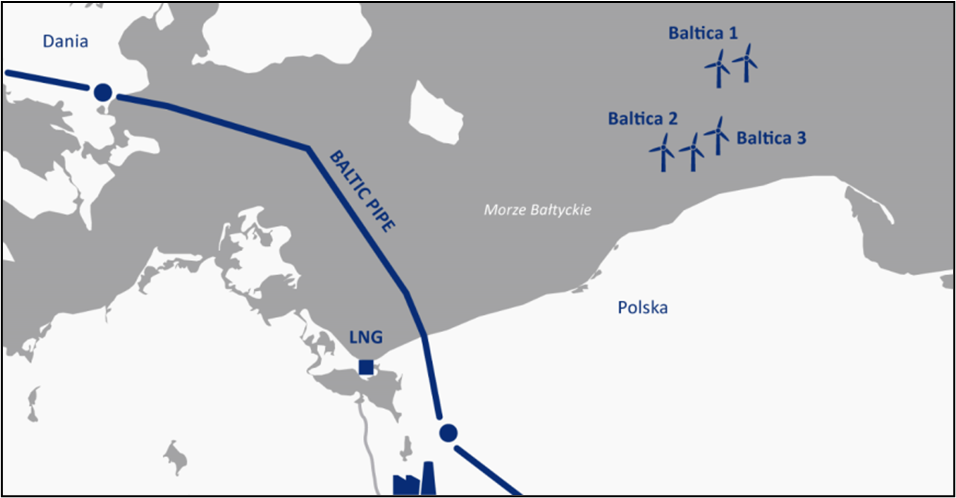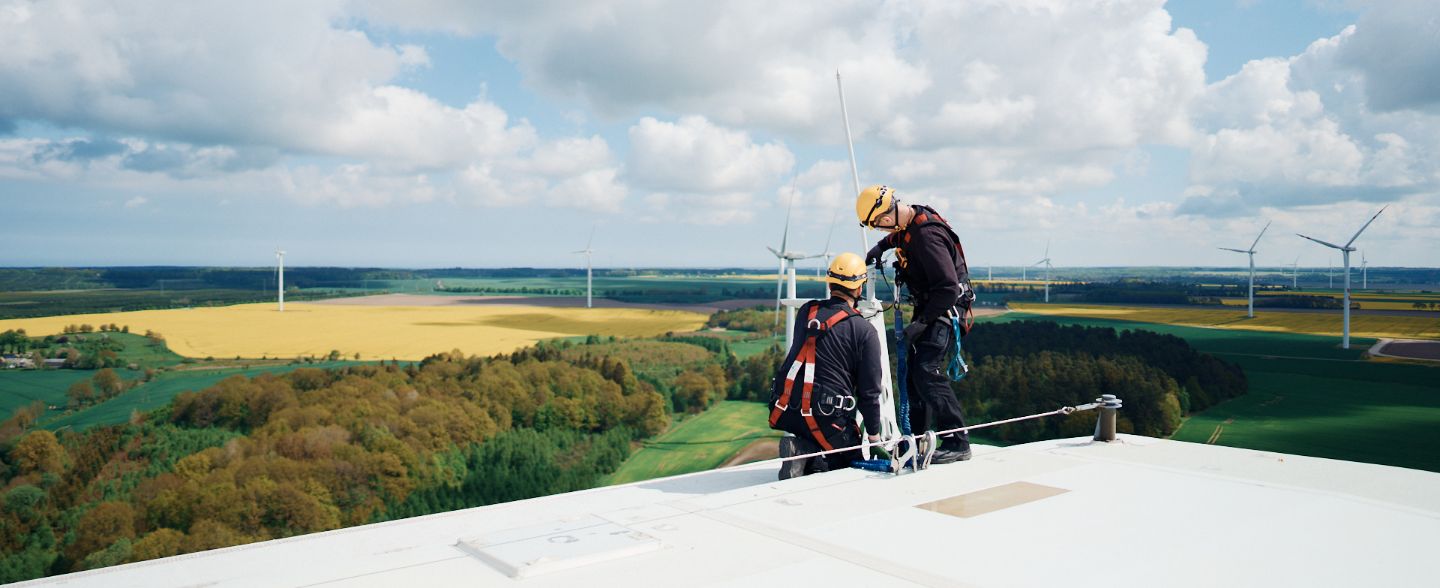-
Own indicator
As part of the strategic objective of achieving zero-carbon in 2050, a transition period is assumed in which low-carbon natural gas, among other fuels, will be used. Investments in natural gas in the Polish electricity system are to be limited to the scale necessary for the diversification and balancing of the domestic generation mix.
Investments in gas-fired capacities are part of PGE Group’s strategy and result from the need to balance the system with the growing role of RES and a shortage of flexible generating capacity in Poland. In its new business model, PGE Group envisages a dedicated low-carbon energy segment. Capacity in the segment will come from two investment projects currently in progress: the construction of gas-fired units at the Dolna Odra plant and the construction of a new low-carbon unit at the Rybnik plant.
Gas-and-steam units at Dolna Odra

The two gas-steam units at the Dolna Power plant (project Gryfino 2050) – each with a gross capacity of 683 MW – are a project of strategic importance to the Polish economy. The contract for the investment was signed with General Electric Global Services GmbH, Polimex Mostostal S.A. and General Electric International Inc in January 2020. The value of the contract is PLN 3.7 billion net and the value of the 12-year maintenance contract is over PLN 1 billion. The units under construction will constitute the largest and most modern gas-fired power plant in Poland.
The investment will be commissioned prior to the end of 2023 and the new units, powered by low-carbon gas, will replace coal-fired capacity that is being phased out, contributing to the gradual decarbonisation of electricity generation in Poland. As of March 31, 2022, the project was approx. 62% complete.
PGE's emerging gas investment is at the forefront of the most modern gas-fired power stations in Europe and one of the key elements of the Group's low-carbon transition. It is also a practical example of how the Polish energy industry is changing. Flexible generation technology in this type of unit will enable system stabilisation and will be important support for the numerous onshore wind farms in Pomerania and the offshore farms under construction in the Baltic Sea, including the largest offshore farms, built by PGE Group. Implementing a project of this scale is also a developmental stimulus for the region and jobs around the investment.
A 17-year contract in the main auction of the capacity market, which will take effect from 2024, is secured for the capacities of the new Dolna Odra plant. They will meet strict environmental standards for emissions. Currently, the average emissions for power generation in the National Power System is around 0.8 tonnes CO2/MWh. In the new units, the emissions will be below 0.35 tonnes of CO2/MWh. The commissioning of the new units will therefore reduce emissions by approx. 2-3 million tonnes of CO2 per year. The new units will produce electricity equivalent to the demand of some 2.5 million households.
The construction of two new gas-fired units will restore the generation potential of the Dolna Odra plant. The investment in modern gas-fired plants is a guarantee of the long-term operation of the power plant, which plays a strategic role in the National Power System as the only system generator for the north-western area of Poland.
The location of the new units will make it possible to take advantage of the potential for gaseous fuel supplies from the nearby LNG terminal in Świnoujście and to exploit the potential of the Baltic Pipe, which is expected to be put into service in the second half of 2022. Connection to the gas network will be ensured through an agreement with GAZ-SYSTEM concluded in March 2020. The investment involves the construction of approx. 63 km of gas pipeline and a gas station.
Construction of a new low-emission unit at Rybnik
- Rebuilding generation capacity in Rybnik
- Low-carbon unit, balancing increasing RES capacities
- Meeting the requirements for a low-carbon unit (BAT conclusions)
- Lower environmental risk – a unit that can be adapted to stricter environmental requirements in the future
- Just transition – Ensuring jobs at the new unit
- Gas units have lower CO2 emissions than coal units and therefore lower exposure to changes in the price of emission allowances
The capital expenditure for the project is estimated at approx. PLN 2.95 billion, of which some PLN 0.88 billion would come from funds raised through the series E share issue that took place in the first half of 2022. According to the adopted schedule, the unit would be put into operation in 2027. The final investment decision will depend on the bids received for the construction of the unit and the outcome of the Capacity Market auction for 2027.



